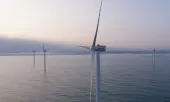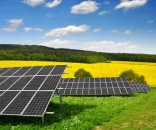
Analysts worried over project bankability amidst Indonesia's new PPA model
"PLN's freedom to negotiate terms has been curtailed," they say.
The Indonesian power sector has to date been the most successful of the infrastructure sectors in attracting private sector investment, and debt financing from both international and domestic lenders, according to Baker Mckenzie.
The State power utility, PT PLN (Persero), has since the very early private sector power generation projects of the 1990s developed a robust and bankable Power Purchase Agreement (PPA) model for large scale power projects.
Here's more from Baker Mckenzie:
Whilst there have been the inevitable "tweaks" to the PPA model over the past 20 years (coming from both the PLN side of the negotiation table as well as the developer/lender side), the model for large scale power projects remains today a solid one, and one that is able to mobilise private sector equity and debt funding.
Recent flagship projects that demonstrate the success of the current PPA model include the Central Java 2x1000MW project, the Sarulla Geothermal Project and many others.
However, the Ministry of Energy and Mineral Resources on 19 January 2017 issued Regulation No. 10/2017 on Principles of Power Purchase Agreements ("MEMR Reg. 10"), which, for the first time in any material way, seeks to impose certain requirements as to what provisions must be built into PPAs in the power sector.
Other power sector regulations have, from time to time, touched lightly on certain aspects of the PPAs (e.g., the mini-hydro regulations provide that if the developer fails to complete construction of the project within the required timeframe, the tariff under the PPA should be subjected to a discount as a form of penalty), but the key bankability and risk allocation points have been left to negotiation between PLN and the developers (and lenders).
However, with the passing of MEMR Reg. 10, PLN's freedom to negotiate terms has been curtailed.













 Advertise
Advertise











